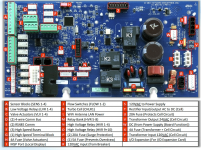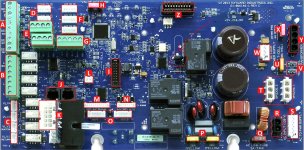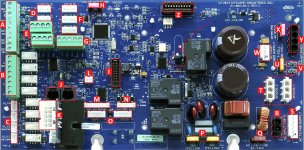I have a Hayward Omnilogic system connected to a Hayward Turbo Cell 15 (GLX-CELL-15-25). In August 2020 I made a horrible mistake of upgrading the Omnilogic firmware to 4.0.0. Immediately after the firmware upgrade the chlorinator started displaying an error "T-CELL Voltage Sensor Short Chlorinator1". As a side note, Omnilogic also lost an ability to control my pool heater, but that's a separate issue. I tried several troubleshooting steps, including:
1. Powering the system off/on
2. Re-seating the Turbo Cell connector cable
3. Removing the chlorinator from Omnilogic configuration and re-adding it
4. Rolling the Omnilogic firmware back to 3.x
Nothing worked. The error remained.
I contacted Hayware support and after several troubleshooting steps, they told my Turbo Cell failed and I need a new one. I decided to wait until next season to tackle the issue.
A week ago I opened the pool for the season and installed a brand new Turbo Cell 15. The SAME error message appeared. This means that there was potentially nothing wrong with the old Turbo Cell and Hayward gave me incorrect info. I tried the following troubleshooting steps:
1. Read Hayward's Omnilogic troubleshooting guide. My error message is NOT in their SWG troubleshooting chart and the only thing the flowchart recommends is to replace the main board (yeah, OK).
2. Checked ALL fuses in the system - all are OK
3. Checked the Turbocell connector - it is NOT burned or corroded
4. Tried removing the chlorinator from Omnilogic configuration and re-adding it
5. Read all the posts on the internet (including on this forum) that refer to this error message.
6. Checked the salt level - it's 3200ppm.
The Turbo Cell seems to be reading a correct salt level (average salt) because I saw the measurement go up from 3200 to 3300 after I added a bag of salt to the pool.
I also opened a case with Hayward, but I dont have high confidence in their ability to troubleshoot the issue since they already misdiagnosed it the first time around.
1. Powering the system off/on
2. Re-seating the Turbo Cell connector cable
3. Removing the chlorinator from Omnilogic configuration and re-adding it
4. Rolling the Omnilogic firmware back to 3.x
Nothing worked. The error remained.
I contacted Hayware support and after several troubleshooting steps, they told my Turbo Cell failed and I need a new one. I decided to wait until next season to tackle the issue.
A week ago I opened the pool for the season and installed a brand new Turbo Cell 15. The SAME error message appeared. This means that there was potentially nothing wrong with the old Turbo Cell and Hayward gave me incorrect info. I tried the following troubleshooting steps:
1. Read Hayward's Omnilogic troubleshooting guide. My error message is NOT in their SWG troubleshooting chart and the only thing the flowchart recommends is to replace the main board (yeah, OK).
2. Checked ALL fuses in the system - all are OK
3. Checked the Turbocell connector - it is NOT burned or corroded
4. Tried removing the chlorinator from Omnilogic configuration and re-adding it
5. Read all the posts on the internet (including on this forum) that refer to this error message.
6. Checked the salt level - it's 3200ppm.
The Turbo Cell seems to be reading a correct salt level (average salt) because I saw the measurement go up from 3200 to 3300 after I added a bag of salt to the pool.
I also opened a case with Hayward, but I dont have high confidence in their ability to troubleshoot the issue since they already misdiagnosed it the first time around.




